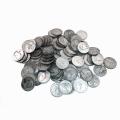Location: Buy Gold → South African Gold Krugerrands
South African Gold Krugerrands
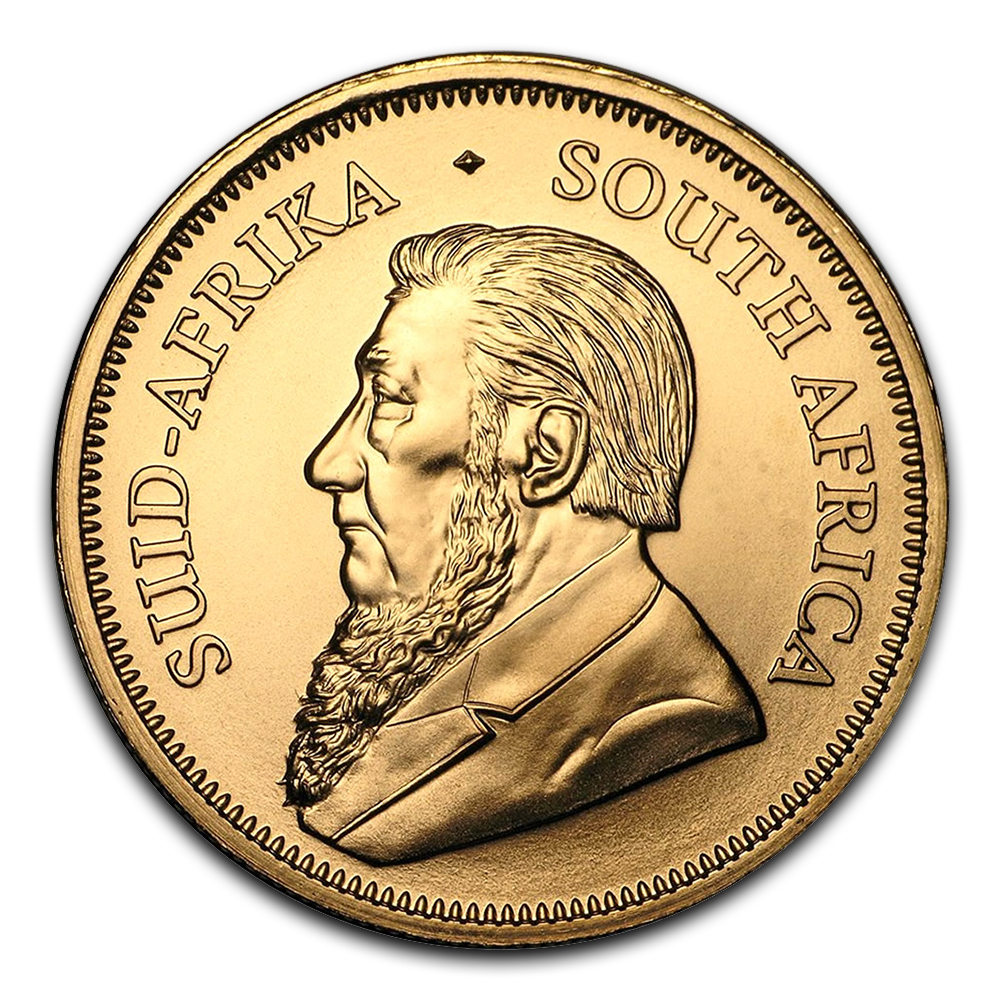
Introduced in 1967, the South Africa Gold Krugerrand became the vehicle for private gold ownership. In the 1970's, its popularity boomed and it was the number one choice of gold investment among collectors and investors. Economic sanctions, due to the apartheid, made the importing of the South Africa Gold Krugerrand illegal but this ended in 1991, when South Africa abandoned the apartheid. The South Africa Gold Krugerrand is 22 karats, 90% pure gold, 10% copper and contains one ounce of pure gold. Only sold in brilliant uncirculated or proof condition, the South Africa Gold Krugerrand will add a nice value to any gold collection.
The South Africa Krugerrand has had a stagnant minting history and collectors are quick to find that the most common dates are from the late 1970's to 1980's. This is because from 1967-69, only 40,000 South Africa Gold Krugerrands were minted each year then that number significantly increases every year after that. By 1978, there were 6 million South Africa Gold Krugerrands being produced and by 1980, this coin reigned 90% of the global gold market. 1980 was also the year the South African Mint decided to add other fractional coins: half, quarter, and tenth ounce.
Design History of South African Krugerrand
The South African Krugerrand's design was constructed by two artists, instead of one. The obverse was designed by Otto Schultz and features the side profile portrait of Paul Kruger. Kruger remains one of the most divisive and well-known political figures from the 19th century. Seated as the 3rd president of the South African Republic, Kruger served for almost 10 years as Commander in Chief. His name was linked to the rand, which is the South African currency, and together make the Krugerrand.
The reverse presents the national animal of the South African Republic: the Springbok antelope. This design was done by Coert Steynberg, featuring the antelope effortlessly galloping through a field. The coin's purity, weight, and year of issue are also engraved on the reverse. The South African Krugerrands were minted with 160 serrations around the edge of the bullion coin and over 200 serrations on the proof coin, resulting in a truly unique coin.
Variations of the South African Krugerrand
The South African Krugerrand began as just a 1 troy oz gold coin but due to extreme demand, smaller increments were introduced in 1980. Four versions: 1 oz, 1/2 oz, 1/4 oz, and 1/10 oz are all still minted today. There were also special edition proof coins minted. The main difference between the proof coins and the bullion is the amount of serrations around the edges.
Sheldon Grading Scale
Dr. William Sheldon was an American psychologist by trade and a numismatist as a hobby. In 1948, Sheldon developed the Sheldon Numeric Scale, which became the foundation of grading and certifying coins. The Sheldon Numeric Scale dictates that a coin's condition can fall between 1 and 70. Before this groundbreaking system, coins were graded mostly by physical appearance and could receive one of three grades.
Certified South African Krugerrands
There are many coin grading agencies out there but only two that are revered worldwide. The Numismatic Guaranty Corporation (NGC) and the Professional Coin Grading Service (PCGS) are two companies that issue coins their grades. These companies not only certify coins, but they also encase the graded coin into an official holder, preserving the coin and marking the holder with its earned grade. This alone has changed the coin collecting game, while also offering a peace of mind for collectors and investors.
When purchasing a Certified South African Krugerrand, there is information provided on the coin holder that is important to know. The first thing to notice is the coin's strike type:
- MS: Short for "Mint-State;" refers to coins that have never been in circulation and are the same condition as when they were originally produced. Mint State coins will receive a grade ranging from 60-70 on the Sheldon Numeric Scale.
- PF/PR: Abbreviation for "Proof;" refers to the method of coin manufacture, made for eye appeal among collectors.
- SP: A "specimen" coin is a combination of strike type (somewhere in the middle of Mint State and Proof).
A Certified American Gold Eagle (or any certified bullion coin) will most likely come in one of two grades:
- MS/PF70: Bullion coins that have kept their original mint luster and contain zero post production flaws.
- MS/PF69: Bullion coins that contain 2 or less minute imperfections but still carry their original mint luster.
Other certification terms often used for bullion coins:
- First Strike: PCGS term designates coins that have been certified within the first 30 days of production by the contributing mint.
- Early Release: NGC term designates coins that have been certified within the first 30 days of production by the contributing mint.
- UCAM/DCAM: Shortened for Ultra-Cameo and Deep-Cameo, these terms refer to the coin's visual brilliance that is apparent on the surface by an unyielding, frosted finish and a deeply mirrored background luster.


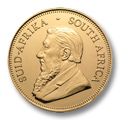 Uncirculated South African Gold Krugerrands
Uncirculated South African Gold Krugerrands
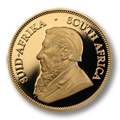 Proof South African Gold Krugerrands
Proof South African Gold Krugerrands
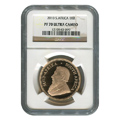 Certified South African Gold Krugerrands
Certified South African Gold Krugerrands
 South African Gold Krugerrand Coin Sets
South African Gold Krugerrand Coin Sets


